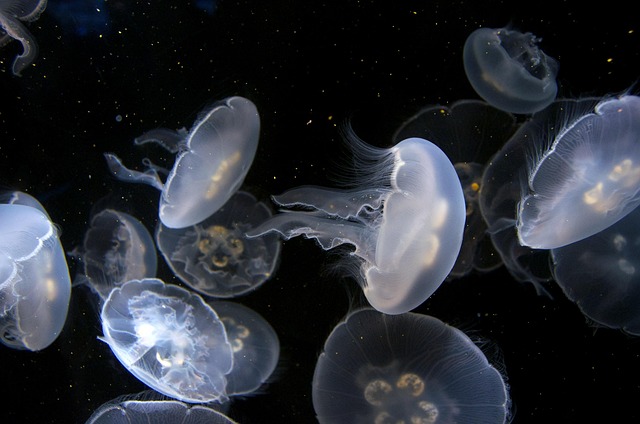Large-scale public aquariums showcase intricate ecosystems through advanced engineering. Sophisticated filtration, life support systems, and collaboration maintain optimal conditions for diverse marine life, creating immersive experiences and conservation hubs. Behind-the-scenes maintenance ensures thriving exhibits, from coral reefs to shark tanks, catering to millions of visitors annually.
Explore the intricate world of aquarium filtration and life support engineering, where precision meets sustainability. This article delves into the complex intricacies of maintaining vibrant aquatic ecosystems, from understanding the nuances of sophisticated filtration systems to engineering innovative life support solutions. Discover how large-scale public aquariums stand as testament to these marvels, showcasing cutting-edge technology while highlighting the behind-the-scenes efforts that keep marine life thriving.
Understanding the Complexities of Aquarium Filtration Systems
Aquarium filtration systems, especially in large-scale public aquariums, are intricate networks designed to maintain water quality and support marine life. These systems go beyond basic circulation and involve a multi-layered process to address various environmental factors crucial for aquatic habitats. The complexity arises from the need to mimic natural conditions while accommodating the diverse needs of different species and tank sizes.
Engineers and aquarist teams must consider physical filtration methods, such as mechanical filters that remove suspended particles, along with biological filtration, where beneficial bacteria break down organic matter. Additionally, chemical filtration plays a role in removing specific contaminants. Balancing these components ensures water parameters remain stable, providing a healthy environment for the wide array of marine creatures displayed in large-scale public aquariums.
Engineering Life Support: Ensuring Aquatic Ecosystems Thrive
Life support systems in large-scale public aquariums are intricate engineering marvels, meticulously designed to mimic and sustain natural aquatic environments. These systems go beyond basic water filtration, incorporating advanced oxygenation techniques, precise temperature control, and innovative waste management strategies. By maintaining optimal conditions, engineers ensure the health and longevity of diverse marine life, from coral reefs to fish species.
The heart of these life support systems lies in high-tech equipment, such as biofilters and protein skimmers, which remove impurities and organic matter. Additionally, advanced oxygenation technologies, like diffusers and aerators, enhance water quality, meeting the breathing needs of aquatic inhabitants. This meticulous behind-the-scenes work is essential to creating thriving ecosystems within large-scale public aquariums, providing visitors with a captivating glimpse into the underwater world while fostering conservation efforts.
Large-Scale Public Aquariums: A Showcase of Engineering Marvels
Large-scale public aquariums stand as engineering marvels, showcasing the intricate balance between art and science. These aquatic wonders aren’t just visually stunning; they’re complex ecosystems that require meticulous filtration and life support systems to sustain their diverse marine life. Engineers and biologists collaborate to design and maintain these habitats, ensuring optimal water quality, temperature regulation, and oxygen levels—all while creating immersive experiences for millions of visitors annually.
From massive tanks housing rare species to intricate recirculating systems that mimic natural environments, large-scale public aquariums embody the pinnacle of aquatic conservation and education. They serve as living laboratories where researchers study marine biology, behavior, and conservation efforts, all while inspiring awe in those who step inside.
Behind-the-Scenes Maintenance: The Unsung Heroes of Aquatic Displays
In the vibrant and mesmerizing world of large-scale public aquariums, a silent army of maintenance workers plays a critical role in keeping the underwater wonders thriving. Behind-the-scenes, these unsung heroes tirelessly ensure that every tank is clean, every filter functions optimally, and the delicate ecosystem remains balanced. Their meticulous work involves regular cleaning of intricate filtration systems – often complex networks of pumps, media beds, and skimmers – to remove accumulated debris and maintain water quality.
This ongoing maintenance is crucial for the health and longevity of aquatic life displayed in these institutions. From adjusting chemical levels to monitoring water circulation, these professionals foster an environment that supports diverse marine species. Their dedication ensures visitors can marvel at vibrant coral reefs, playful dolphins, and majestic sharks, unaware of the behind-the-scenes efforts required to keep these exhibits running smoothly.
The intricate world of aquarium filtration and life support engineering is a testament to human ingenuity. From understanding the complexities of these systems to maintaining thriving aquatic ecosystems in large-scale public aquariums, every aspect plays a crucial role. These engineering marvels not only offer breathtaking displays but also serve as vital educational tools, fostering an appreciation for marine life and its delicate balance. Behind the scenes, dedicated professionals ensure these habitats remain healthy, making it possible for us to explore and connect with the wonders of our oceans.
